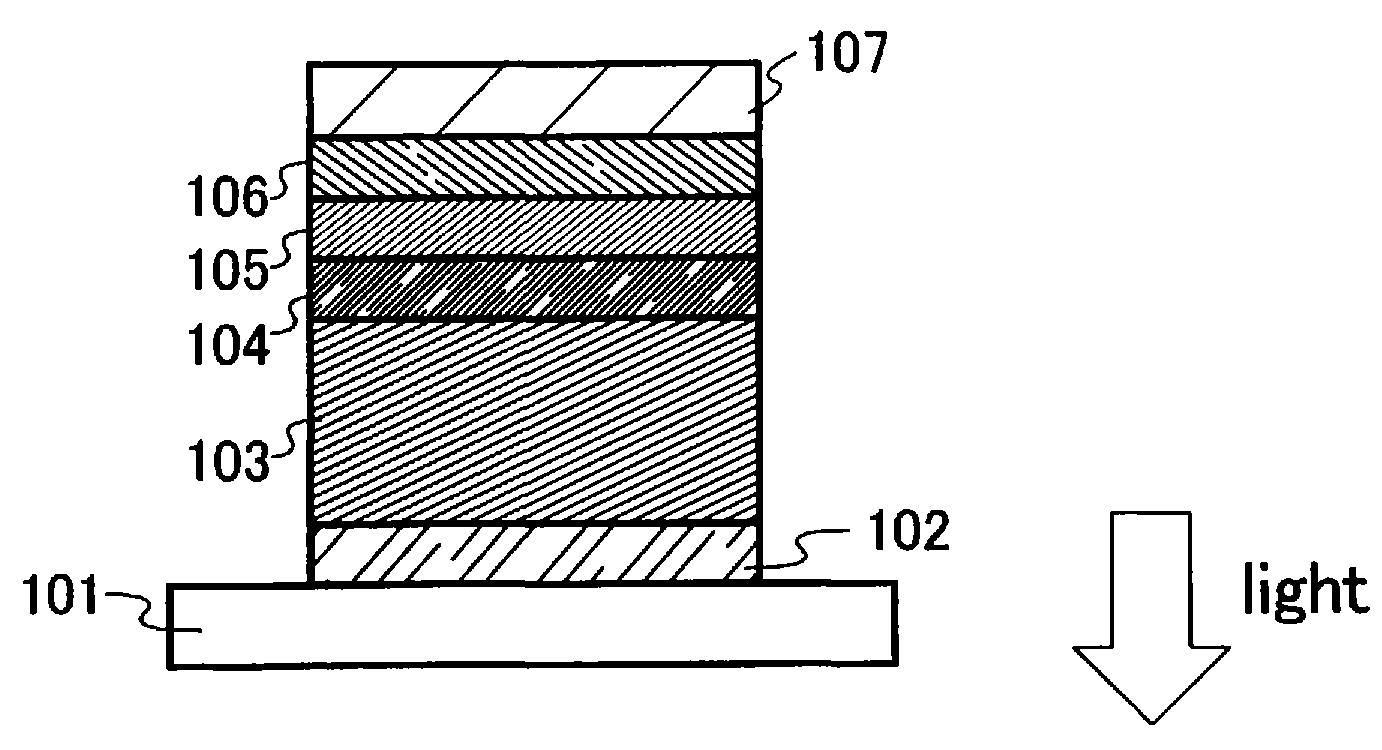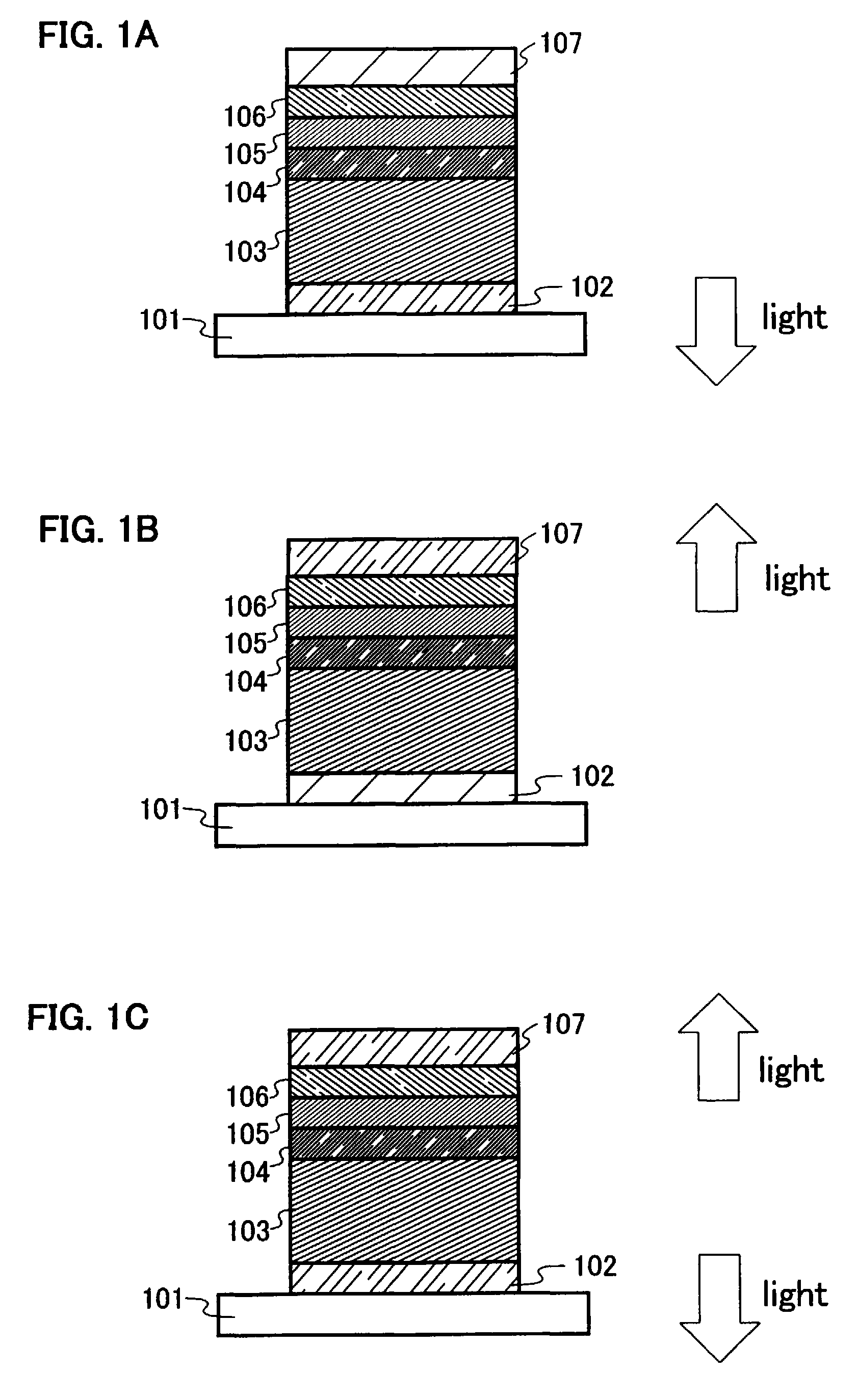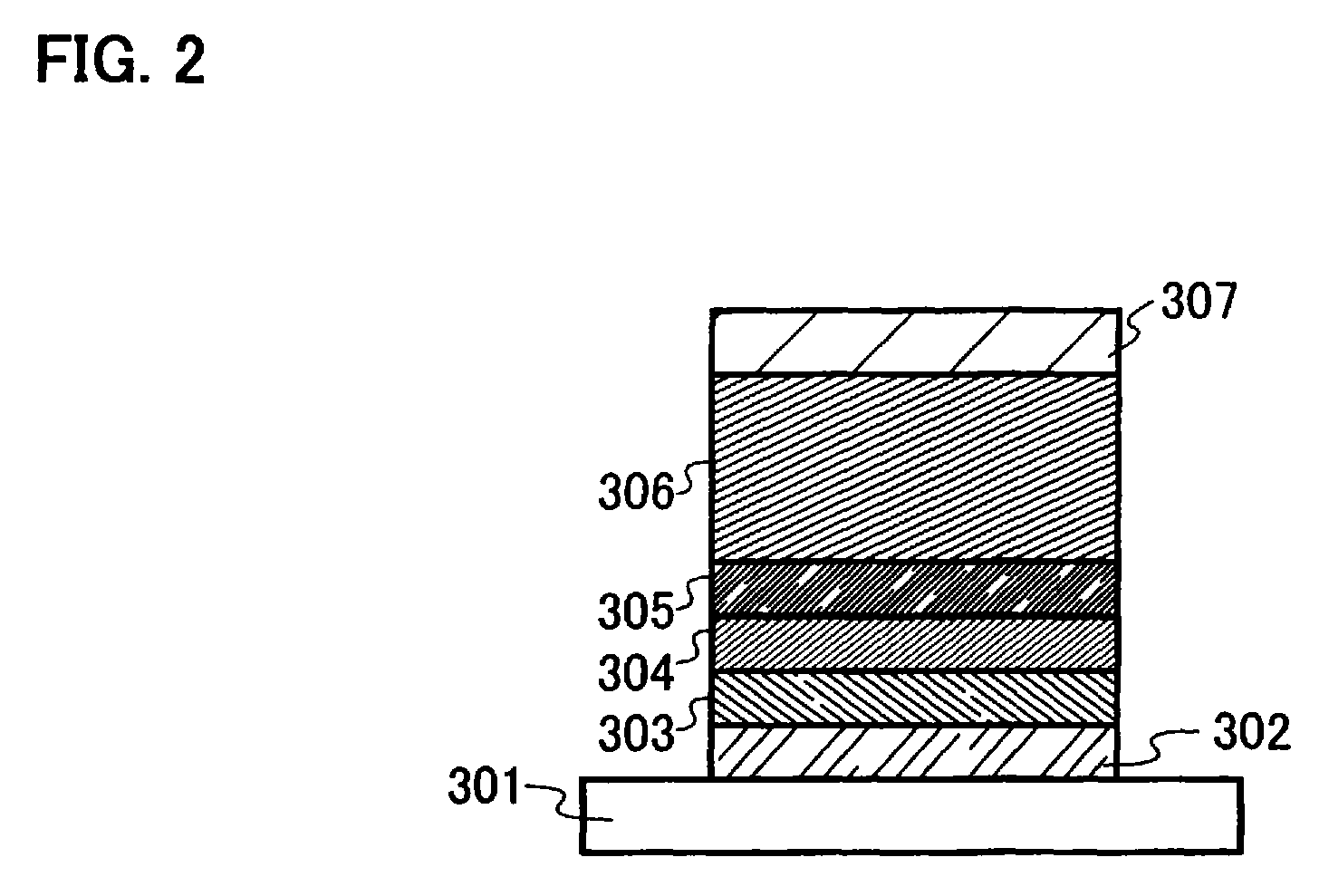Light emitting element and light emitting device and method of manufacturing light emitting element
a technology of light emitting devices and light emitting elements, which is applied in the direction of thermoelectric devices, other domestic articles, solid-state devices, etc., can solve the problems of complex process flow, still many problems, and inability to meet the requirements of forming tft, so as to achieve the effect of increasing the thickness of the layer on the substrate side where tft or the like is formed, high luminous efficiency, and increasing the thickness of the layer other than the light emitting region
- Summary
- Abstract
- Description
- Claims
- Application Information
AI Technical Summary
Benefits of technology
Problems solved by technology
Method used
Image
Examples
embodiment 1
[0059] In this embodiment, a layer containing a composite material used for a light emitting element of the present invention will be described. The layer containing a composite material used for a light emitting element of the invention contains an organic compound and an inorganic compound.
[0060] An organic compound contained in the layer containing a composite material is preferably a material superior in hole transporting property. In particular, an organic compound material having an arylamine skeleton, for example, a compound of aromatic amines (namely, having a benzene ring-nitrogen bond) such as 4,4′-bis (N-{4-[N,N′-bis(3-methylphenyl)amino]phenyl}-N-phenylamino)biphenyl (abbreviated as DNTPD), 4,4′-bis [N-(4-diphenylaminophenyl)-N-phenylamino]biphenyl (abbreviated as DPAB), N,N′-bis(3-methylphenyl)-N,N′-diphenyl-[1,1′-biphenyl]-4,4′-diamine (abbreviated as TPD), 4,4′-bis [N-(1-naphthyl)-N-phenylamino]biphenyl (abbreviated as a-NPD), 4,4′-bis [N-(9,9-dimethylfluorene-2-yl)-...
embodiment 2
[0067] In this embodiment, a light emitting region having a multiple quantum well structure in a light emitting element of the present invention will be described.
[0068] A light emitting region of a light emitting element of the invention has a multiple quantum well structure. Specifically, a material having high carrier transporting property, which is hardly crystallized (hereinafter referred to as a host material), and a material having high light emitting property (hereinafter referred to as a guest material) are combined to form the structure.
[0069] As the material having high carrier transporting property, for example, a silicon compound such as tetraphenylsilane or tetra(3-methylphenyl) silane, an anthracene derivative such as 9,10-diphenylanthracene or 9,10-di(2-naphthyl)anthracene, a bianthryl derivative such as 10,10′-diphenyl 9,9′-dianthracene, a pyrene derivative such as 1,3,6,8-tetraphenylpyrene, a carbazole derivative such as 4,4′-di(N-carbazolyl)biphenyl, an oxazole ...
embodiment 3
[0080] A vapor deposition apparatus used for implementing the present invention and a method of manufacturing a light emitting region having a multiple quantum well structure using the vapor deposition apparatus with reference to FIGS. 12 to 15.
[0081] In the vapor deposition apparatus used in this embodiment, a treatment chamber 1001 in which an object is subjected to vapor deposition and a transferring chamber 1002 are provided. The object is transferred to the treatment chamber 1001 through the transferring chamber 1002. The transferring chamber 1002 is provided with an arm 1003 for carrying the object (FIG. 15).
[0082] As shown in FIG. 12, in the treatment chamber 1001, a holder for fixing an object, an evaporation source 1011a filled with a first material, and an evaporation source 1011b filled with a second material are provided. In FIG. 12, the holder for holding an object includes a first rotating plate 1012, which rotates around an axis 1013, and a plurality of second rotat...
PUM
 Login to View More
Login to View More Abstract
Description
Claims
Application Information
 Login to View More
Login to View More - R&D
- Intellectual Property
- Life Sciences
- Materials
- Tech Scout
- Unparalleled Data Quality
- Higher Quality Content
- 60% Fewer Hallucinations
Browse by: Latest US Patents, China's latest patents, Technical Efficacy Thesaurus, Application Domain, Technology Topic, Popular Technical Reports.
© 2025 PatSnap. All rights reserved.Legal|Privacy policy|Modern Slavery Act Transparency Statement|Sitemap|About US| Contact US: help@patsnap.com



